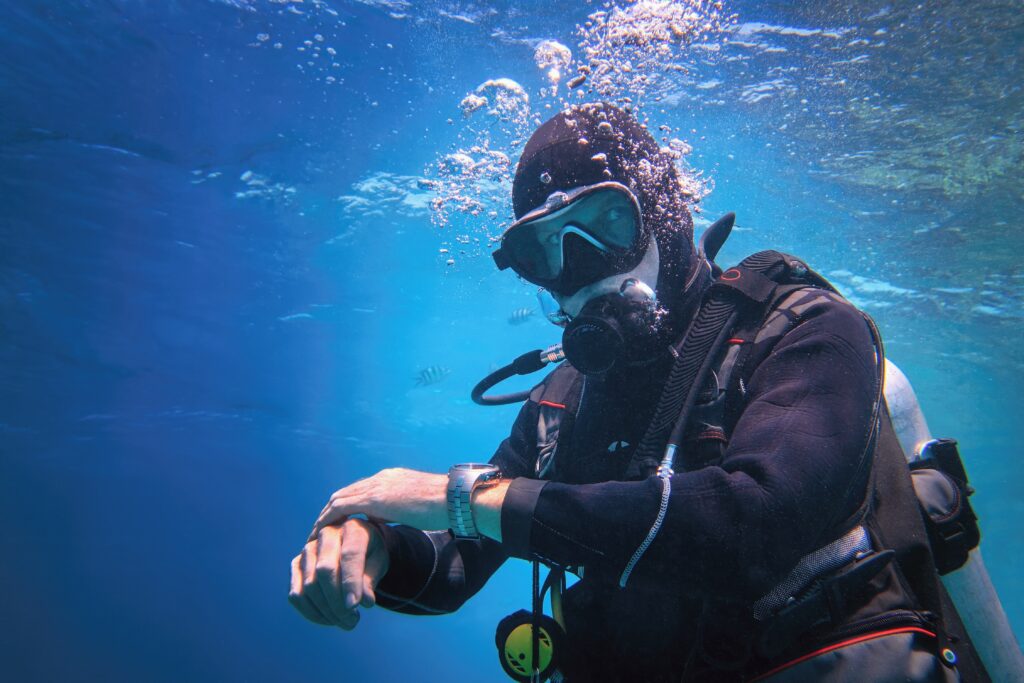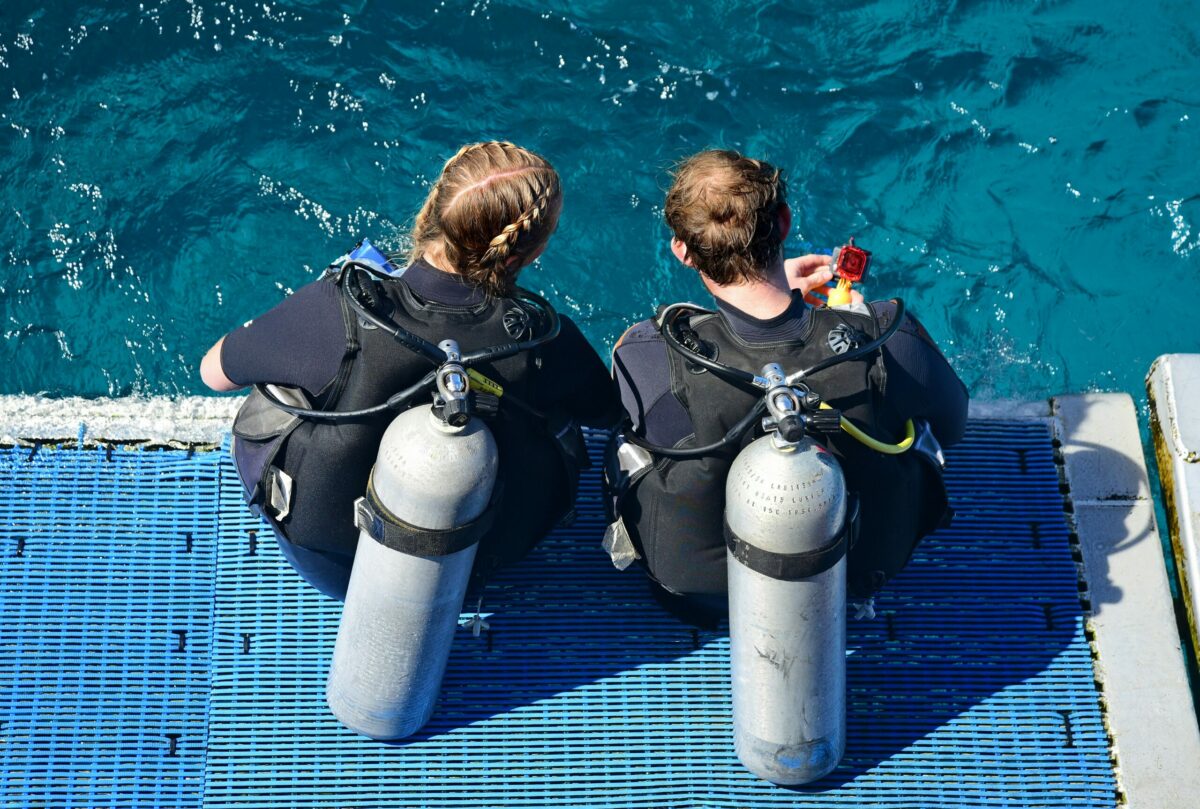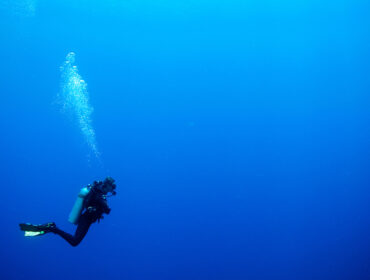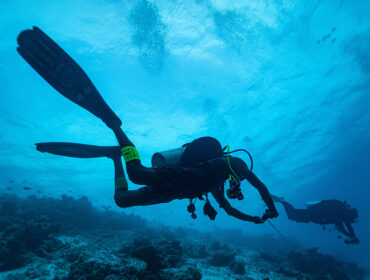So, you’re gearing up for another underwater adventure — wetsuit, check. Tank, check. Fins, check. Now, all you have to prep is that oh-so-important plan for dive safety and air consumption. But don’t worry, dear. I know of a rule that will make your dives smoother and safer! It’s called “the 120 Rule.”
But what exactly is the 120 Rule in scuba diving? Also, how does it compare to other common dive rules, like the 1/3 Rule? Let’s go and break down everything you need to know.
What is the 120 Rule for diving?
The 120 Rule is a simple guideline that helps divers like you plan safe and efficient dives. To be more specific, it focuses on managing depth and dive time. To illustrate, let me show you this sample:
120 minus your depth (in feet) = your maximum bottom time (in minutes).
Subtract the depth you’re diving (in feet) from 120. The resulting number is the maximum amount of minutes you should spend at that depth.
Why should you know this rule?
It simplifies dive planning. When diving, you should know how long you can stay at your planned depth. Otherwise, you risk being down there too long. Fast forward, you’ll have to make lots of safety decompression stops during your way back to the surface. Mmm.. that sounds like a lot of hassle!

If you mess it up, you increase your risk of decompression sickness or “the bends.” It has serious consequences to your health.
When to Use this Rule
The 120 Rule is popular for its usefulness with recreational divers and in situations where you’re diving to moderate depths. Here are specific scenarios where it’s helpful:
- No-decompression dives: If your dive plan does not include decompression stops and you want to ensure a straightforward dive, the 120 Rule gives you an estimate for how long you can stay at a particular depth.
- Shallower depth dives: It’s especially useful for depths of 100 feet or less. Beyond that, decompression limits shorten significantly. Therefore, you’ll need more precise calculations using your dive computer or dive tables.
The rule isn’t applicable in all cases. Diving with Nitrox will have your no-decompression limits be different. It’s because you have higher oxygen content in your gas mix.
Similarly, if you’re making multiple dives in one day, all the accumulated nitrogen in your body affects your no-decompression limits. In these cases, always rely on your dive computer or dive tables for precise calculations.
How does the 120 Rule compare to the 1/3 Rule?
The 1/3 Rule focuses on air management rather than dive time and depth. It’s commonly used in overhead environments (like wrecks or caves) where you cannot ascend directly to the surface. Here’s a breakdown of how the 1/3 Rule works:
- 1/3 of your air supply is used to descend and explore.
- 1/3 of your air supply is reserved for the return to the surface or exit.
- 1/3 is kept in reserve in case of emergencies.
Key differences between the 120 Rule vs the 1/3 Rule
| Factors | 120 Rule | 1/3 Rule |
| Purpose | For dive time and depth management to stay within no-decompression limits. | Managing air consumption so you have enough air to safely exit or handle an emergency. |
| When/Where to Use It | The 120 Rule is mainly used for open water/recreational dives, so one can ascend directly to the surface if needed. | In overhead environments like wrecks or caves, where direct ascent is not possible. Also, in technical diving. |
| Risk Management | Prevent decompression sickness by guiding no-decompression dive times. | Manage air supply so you have enough air to return safely and respond to emergencies. |
FAQs: The 120 Rule in Scuba Diving
The rule you should never forget in scuba diving is to never hold your breath. Ever. If you do, the pressure of air in your lungs rapidly decreases, causing the rupture of your lung walls.
Yes. However, you need moderate to high levels of experience because it’s not a friendly depth for everyone.
The danger zone for scuba diving is generally at a depth of more than 100 feet or more than 30 meters.
Not exactly. It’s a good starting point for recreational dives, but factors like your breathing rate, water temperature, and dive profile can influence your actual no-decompression limit. Always back it up with your dive computer or dive tables.
You need to make some adjustments. Consult your dive computer or Nitrox tables for precise information.
Going beyond the calculated time could put you at risk of needing decompression stops, which increases your chances of developing decompression sickness.
Absolutely! Even though experienced divers may have a deeper understanding of dive planning, the 120 Rule is still a quick and handy tool for everyone. Including the experts.
It works best for shallower recreational dives. For technical dive or extreme dives, the 120 Rule alone might not be sufficient for safety planning. Consider other factors and use a dive computer.
Use the 120 Rule — but don’t forget common sense.

The 120 Rule is an easy-to-use guideline for keeping your dives within no-decompression limits, especially if you’re doing recreational dives without complicated profiles. It helps you quickly estimate your maximum bottom time at a given depth.
But like any rule, it has its limitations. Always back it up with a dive computer, monitor your air consumption, and factor in any unique circumstances of your dive. Some examples of this could be when you’re using Nitrox or diving in more advanced conditions.
Safe diving, alright? And remember — don’t be a fish out of water when it comes to dive planning!





